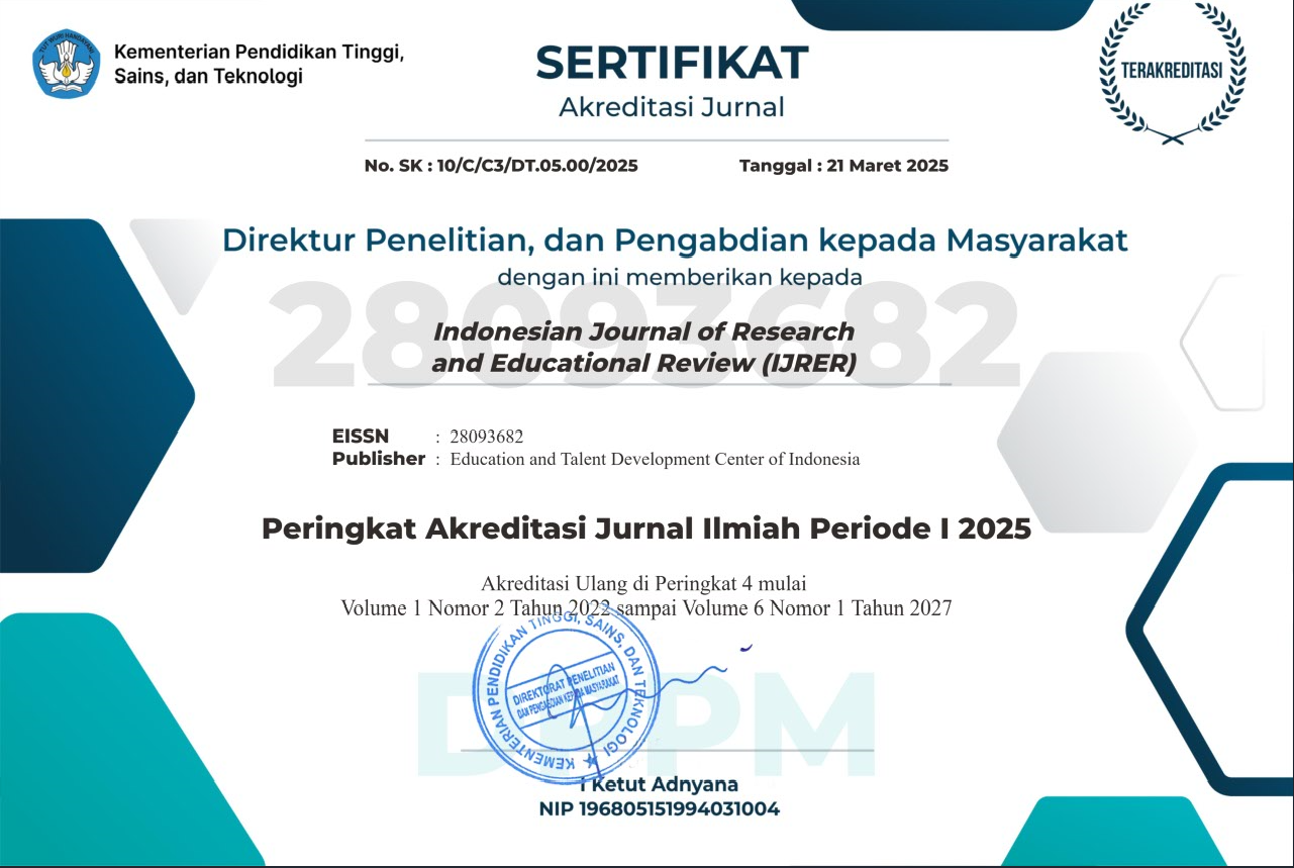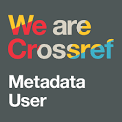The Influence Sequence Picture on Indonesian ELT Learners Writing Skill
DOI:
https://doi.org/10.51574/ijrer.v1i2.340Keywords:
ELT, Sequence Picture, Writing SkillAbstract
The goal of this study was to see if using sequence graphics when writing procedural text improves writing skills. As a result, a quasi-experimental approach was used in this study. In both the pre-test and post-test, data on the students' writing abilities were gathered using the interview method. After gathering the data, descriptive analysis was used to examine it. The study included 13 students from IAI As'adiyah Sengkang, Indonesia, who were in their fifth semester of English education. Cluster random sampling was used to gather them. To measure the progress of the sequence picture technique, the researcher conducted a t-test study. The study findings revealed that there was no statistically significant difference between the pretest and posttest. The t-test value (0.11) was found to be greater than the level of significance α (0.05) and degree of freedom (df) = 41. The researcher finds that employing the sequence pictures technique does not significantly improve students' writing skills in procedural text based on the findings and discussion of the study.
References
Abrahim, S., Mir, B. A., Suhara, H., Mohamed, F. A., & Sato, M. (2019). Structural equation modeling and confirmatory factor analysis of social media use and education. International Journal of Educational Technology in Higher Education, 16(1), 1-25. https://doi.org/10.1186/s41239-019-0157-y
Alwasilah, C. (2013). Policy on foreign language education in Indonesia. International Journal of Education, 7(1), 1-19. https://www.learntechlib.org/p/208914/
Andersen, S. C., Christensen, M. V., Nielsen, H. S., Thomsen, M. K., Østerbye, T., & Rowe, M. L. (2018). How reading and writing support each other across a school year in primary school children. Contemporary Educational Psychology, 55, 129-138. https://doi.org/10.1016/j.cedpsych.2018.09.005
Asemota, H. E. (2015). The role of media in English language development. International Journal of Humanities and Social Science Studies (IJHSSS), 2(3), 311-16.
Bajrami, L., & Ismaili, M. (2016). The role of video materials in EFL classrooms. Procedia-Social and Behavioral Sciences, 232, 502-506. https://doi.org/10.1016/j.sbspro.2016.10.068
Brown, G. T., Glasswell, K., & Harland, D. (2004). Accuracy in the scoring of writing: Studies of reliability and validity using a New Zealand writing assessment system. Assessing writing, 9(2), 105-121. https://doi.org/10.1016/j.asw.2004.07.001
Buckingham, D. (2007). Media education goes digital: an introduction. Learning, Media and technology, 32(2), 111-119. https://doi.org/10.1080/17439880701343006
Bulqiyah, S., Mahbub, M., & Nugraheni, D. A. (2021). Investigating Writing Difficulties in Essay Writing: Tertiary Students' Perspectives. English Language Teaching Educational Journal, 4(1), 61-73. https://eric.ed.gov/?id=EJ1296404
Clouse, B. F., & Clouse, B. F. (2013). The student writer. McGraw-Hill.
Daigle, D., Costerg, A., Plisson, A., Ruberto, N., & Varin, J. (2016). Spelling errors in French‐speaking children with dyslexia: Phonology may not provide the best evidence. Dyslexia, 22(2), 137-157. https://doi.org/10.1002/dys.1524
Dallimore, E. J., Hertenstein, J. H., & Platt, M. B. (2008). Using discussion pedagogy to enhance oral and written communication skills. College Teaching, 56(3), 163-172. https://doi.org/10.3200/CTCH.56.3.163-172
Dawes, L. (2012). What stops teachers using new technology?. In Issues in teaching using ICT (pp. 61-80). Routledge. https://doi.org/10.4324/9780203185117-5
Donough, J. M., & Shaw, C. (2003). Materials and method in ELT: A Teacher’s guide-2nd.
Downs, R. M., & Stea, D. (Eds.). (2017). Image and environment: Cognitive mapping and spatial behavior. Transaction Publishers.
Duong, A., Giroux, F., Tardif, A., & Ska, B. (2005). The heterogeneity of picture-supported narratives in Alzheimer’s disease. Brain and language, 93(2), 173-184. https://doi.org/10.1016/j.bandl.2004.10.007
Duong, A., & Ska, B. (2001). Production of narratives: Picture sequence facilitates organizational but not conceptual processing in less educated subjects. Brain and cognition, 46(1-2), 121-124. https://doi.org/10.1016/S0278-2626(01)80047-6Fareed, M., Ashraf, A., & Bilal, M. (2016). ESL learners’ writing skills: Problems, factors and suggestions. Journal of Education and Social Sciences, 4(2), 81-92.
Firkins, A., Forey, G., & Sengupta, S. (2007). Teaching writing to low proficiency EFL students. ELT journal, 61(4), 341-352. https://doi.org/10.1093/elt/ccm052
George, D. (2002). From analysis to design: Visual communication in the teaching of writing. College composition and communication, 11-39. https://doi.org/10.2307/1512100
Gendroyono, G. (2021). The Improvement of Students’ Ability in Writing Procedure Text Through Picture Series. Jurnal Pendidikan Indonesia, 2(6), 993-1023. https://doi.org/10.36418/japendi.v2i6.201
Golkova, D., & Hubackova, S. (2014). Productive skills in second language learning. Procedia-Social and Behavioral Sciences, 143, 477-481. https://doi.org/10.1016/j.sbspro.2014.07.520
Hamzah, H., Amin, F. H., & Nawir, N. (2022). Penggunaan Gambar Berseri Untuk Meningkatkan Kemampuan Menulis Teks Prosedur pada Siswa Kelas IX. 1 MTs. Paitana Kab. Jeneponto Sulawesi Selatan. JURNAL PEMIKIRAN DAN PENGEMBANGAN PEMBELAJARAN, 4(1), 497-505. http://www.ejournal-jp3.com/index.php/Pendidikan/article/view/252
Hyland, K. (2008). Academic clusters: Text patterning in published and postgraduate writing. International Journal of Applied Linguistics, 18(1), 41-62. https://doi.org/10.1111/j.1473-4192.2008.00178.x
Jacobs, H. H. (2014). Active literacy across the curriculum: Strategies for reading, writing, speaking, and listening. Routledge.
Kumala, B. P., Aimah, S., & Ifadah, M. (2018). An Analysis of Grammatical Errors on Students' Writing. In English Language and Literature International Conference (ELLiC) Proceedings (Vol. 2, pp. 144-149). https://jurnal.unimus.ac.id/index.php/ELLIC/article/view/3513
Lavrenko, V., Manmatha, R., & Jeon, J. (2003). A model for learning the semantics of pictures. Advances in neural information processing systems, 16.
Loi, O. P., Tamba, S. B., Pangaribuan, M., & Saragih, E. (2020). Using Flash Expressions Book as Instructional Media to Vocabulary Mastery in Learning English. Jurnal Pendidikan Bahasa Inggris undiksha, 8(2), 74-79. http://dx.doi.org/10.23887/jpbi.v8i2.30619
Louie, B., & Sierschynski, J. (2015). Enhancing English learners' language development using wordless picture books. The Reading Teacher, 69(1), 103-111. https://doi.org/10.1002/trtr.1376
Loureiro, M., Loureiro, N., & Silva, R. (2020). Differences of gender in oral and written communication apprehension of university students. Education Sciences, 10(12), 379. https://doi.org/10.3390/educsci10120379
Mattarima, K., & Hamdan, A. R. (2011). The teaching constraints of English as a foreign language in Indonesia: The context of school based curriculum. Sosiohumanika, 4(2). https://doi.org/10.2121/sosiohumanika.v4i2.452
McLeod, S. (2018). Communication rights: Fundamental human rights for all. International Journal of Speech-Language Pathology, 20(1), 3-11. https://doi.org/10.1080/17549507.2018.1428687
Miralpeix, I., & Muñoz, C. (2018). Receptive vocabulary size and its relationship to EFL language skills. International Review of Applied Linguistics in Language Teaching, 56(1), 1-24. https://doi.org/10.1515/iral-2017-0016
Mistar, J. (2005). Teaching English as a foreign language (TEFL) in Indonesia. Teaching English to the world: History, curriculum, and practice, 71-80.
Monaco, J., & Lindroth, D. (2000). How to read a film: the world of movies, media, and multimedia: language, history, theory. Oxford University Press, USA.
Murray, G. (2013). Pedagogy of the possible: Imagination, autonomy, and space. Studies in Second Language Learning and Teaching, 3(3), 377-396. https://www.ceeol.com/search/article-detail?id=180378
Nasution, A. K. R. (2019). YouTube as a media in English language teaching (ELT) context: teaching procedure text. Utamax: Journal of Ultimate Research and Trends in Education, 1(1), 29-33. https://doi.org/10.31849/utamax.v1i1.2788
Nicolaou, C., Matsiola, M., & Kalliris, G. (2019). Technology-enhanced learning and teaching methodologies through audiovisual media. Education Sciences, 9(3), 196. https://doi.org/10.3390/educsci9030196
Octaberlina, L. R., & Muslimin, A. I. (2020). EFL Students Perspective towards Online Learning Barriers and Alternatives Using Moodle/Google Classroom during COVID-19 Pandemic. International Journal of Higher Education, 9(6), 1-9. https://eric.ed.gov/?id=EJ1277897
Pardiyono, P. B. (2007). Teaching Genre Based Writing, Yogyakarta: CV. Andi Offset.
Renandya, W. A., & Widodo, H. P. (Eds.). (2016). English language teaching today: Linking theory and practice (Vol. 5). Springer.
Sadiku, L. M. (2015). The importance of four skills reading, speaking, writing, listening in a lesson hour. European Journal of Language and Literature, 1(1), 29-31. https://doi.org/10.26417/ejls.v1i1.p29-31
Simanjorang, S., & Pulungan, A. H. (2021). Students’difficulties in writing process of recount text for eight grade of junior high school. REGISTER: Journal of English Language Teaching of FBS-Unimed, 10(3). https://doi.org/10.24114/reg.v10i3.29980
Siregar, A. S. B., Tobing, E. G. L., & Fitri, N. R. (2021). Developing of Teaching Materials: Using Animation Media to Learning English Vocabulary for Early Childhood. ETDC: Indonesian Journal of Research and Educational Review, 1(1), 9-16. https://doi.org/10.51574/ijrer.v1i1.44
Smaldino, S. E., Lowther, D. L., Russell, J. D., & Mims, C. (2008). Instructional technology and media for learning.
Sörqvist, P., Nöstl, A., & Halin, N. (2012). Disruption of writing processes by the semanticity of background speech. Scandinavian Journal of Psychology, 53(2), 97-102. https://doi.org/10.1111/j.1467-9450.2011.00936.x
Sternglass, M. S. (2017). Time to know them: A longitudinal study of writing and learning at the college level. Routledge.
Syakur, A. (2020). The Effectiveness of English Learning Media through Google Classroom in Higher Education. Britain International of Linguistics Arts and Education (BIoLAE) Journal, 2(1), 475-483. https://doi.org/10.33258/biolae.v2i1.218
Taylor, G. (2009). A student's writing guide: How to plan and write successful essays. Cambridge University Press.
Thornton, P., & Houser, C. (2005). Using mobile phones in English education in Japan. Journal of computer assisted learning, 21(3), 217-228. https://doi.org/10.1111/j.1365-2729.2005.00129.x
Toba, R., & Noor, W. N. (2019). The current issues of Indonesian EFL students’ writing skills: Ability, problem, and reason in writing comparison and contrast essay. Dinamika Ilmu: Jurnal Pendidikan, 57-73. https://doi.org/10.21093/di.v19i1.1506
Walton, E. (2015). The language of inclusive education: Exploring speaking, listening, reading and writing. Routledge.
Warschauer, M., & Grimes, D. (2008). Automated writing assessment in the classroom. Pedagogies: An International Journal, 3(1), 22-36. https://doi.org/10.1080/15544800701771580
Weigle, S. C. (2007). Teaching writing teachers about assessment. Journal of Second Language Writing, 16(3), 194-209. https://doi.org/10.1016/j.jslw.2007.07.004
Wiratmajaya, I. G. N. A., Artika, I. W., & Darmayanti, I. A. M. (2015). Penggunaan Gambar Berseri Untuk Meningkatkan Kemampuan Menulis Teks Prosedur Kompleks pada Siswa Kelas X Akuntansi A SMK Negeri 1 Singaraja. Jurnal Pendidikan Bahasa Dan Sastra Indonesia Undiksha, 3(1). http://dx.doi.org/10.23887/jjpbs.v3i1.6257









1.png)













